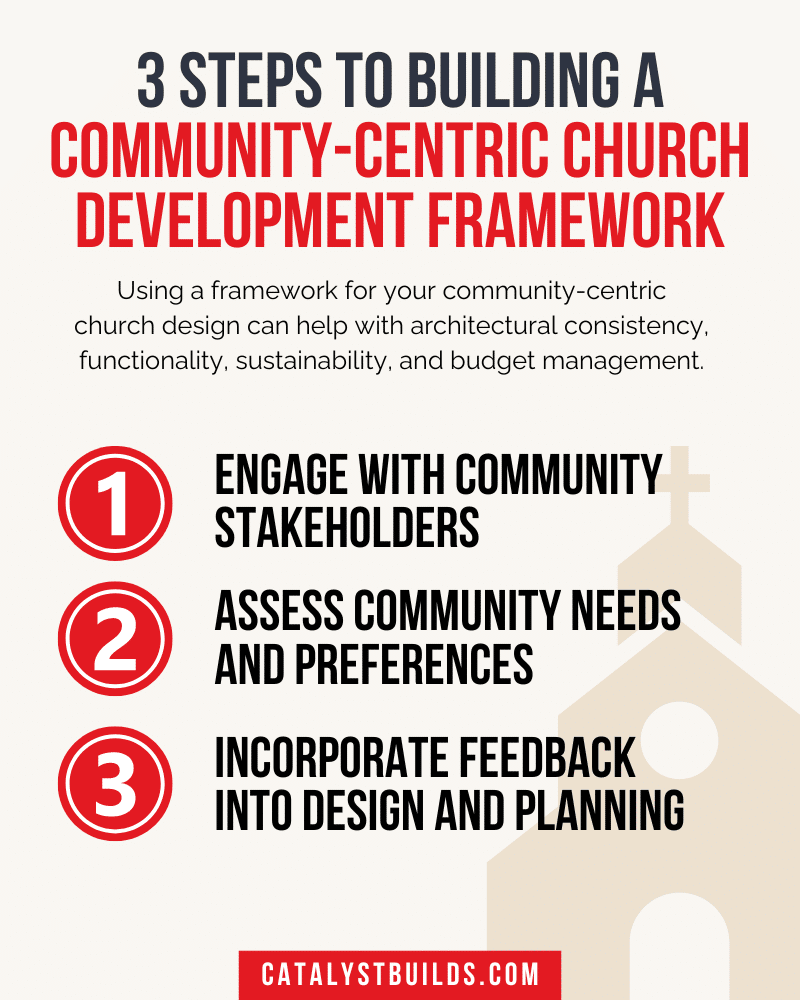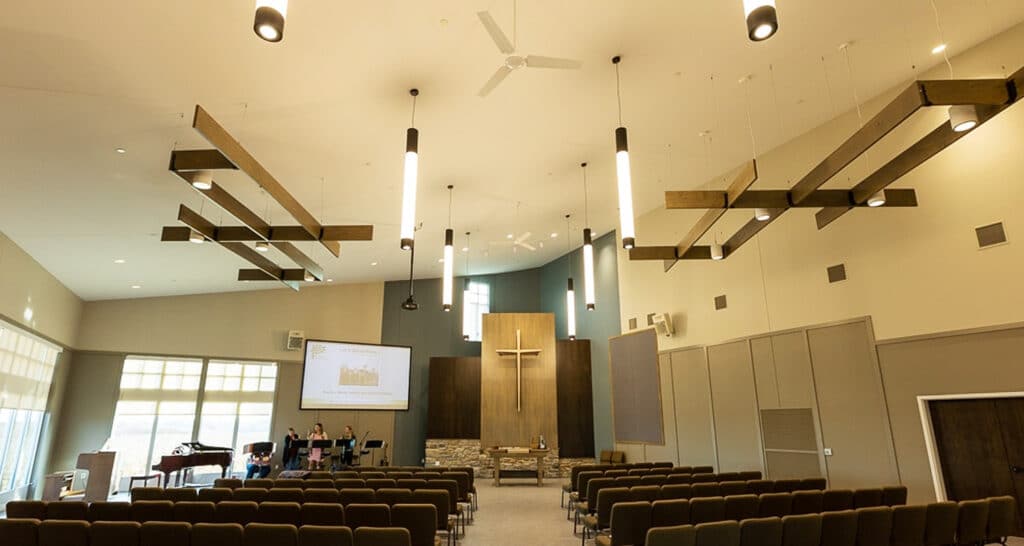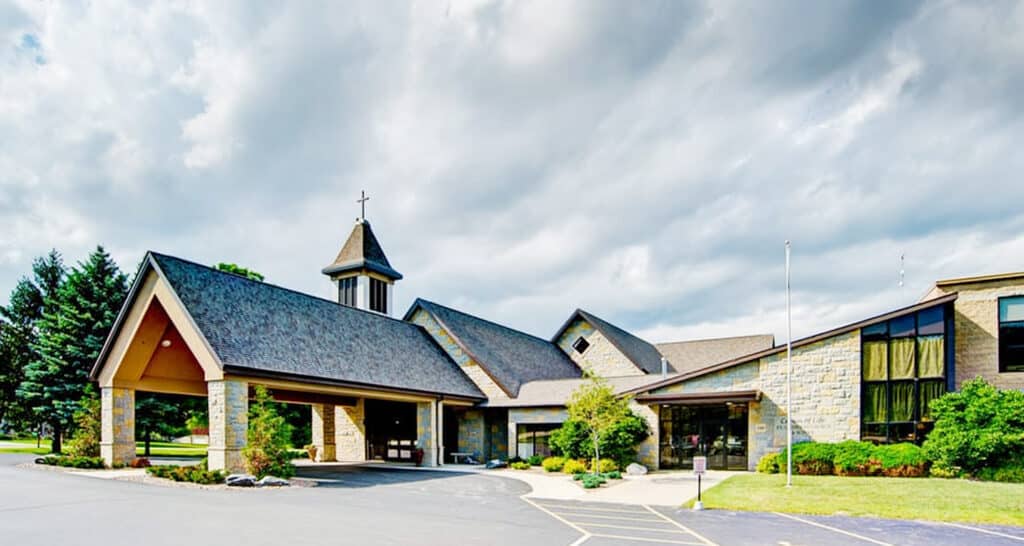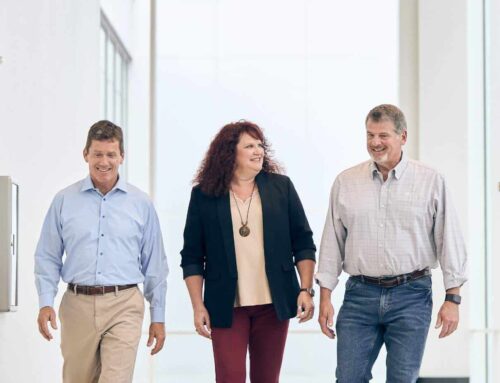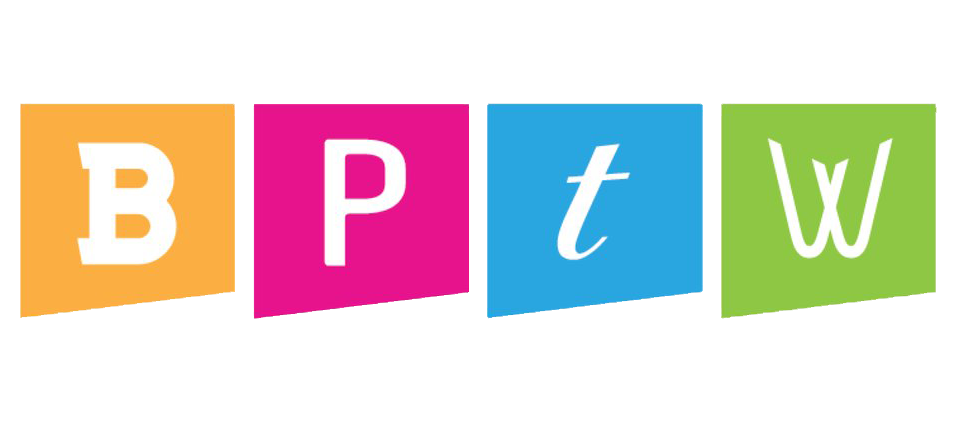St. Mark’s was bustling with joyful activity as the aroma of roasted chicken and potatoes filled the air. Each week, the church’s multi-purpose hall transformed into a welcoming cafeteria, serving as a beacon of hope for those facing food insecurity.
As the adults expressed their gratitude and the children whispered, “Thank you,” before taking a bite of their meal, it was clear that St. Mark’s was fulfilling its divine mission within the community.
Pastor Joe often thanked God for the community-centric design, which was influenced by members during the church construction planning process. From the look on the volunteers’ faces, he was sure they were proud of their participation, as well.
Community-centric development is becoming a pivotal approach to church construction and renovation. This approach positions the church as a hub of support, interaction, and Godly growth. Unlike traditional construction models prioritizing aesthetics or cost efficiency, community-centric development emphasizes relationships.
The Bible tells us “not to look at our own interest, but instead, look at the interest of others.” This concept perfectly aligns with the importance of considering people’s needs within and outside of the church.
You may be wondering how to design a church with a community-centric focus. We encourage you to stick around—it’s not as hard as you think!
Understanding Community-Centric Development
Many churches are built with aesthetics in mind or heavily influenced by material and labor pricing. But there are ways to satisfy these points while still designing your church to be a local hub of activity and engagement – for the community, by the community.
Read on to learn the key points of developing a community-centric church design that includes your parishioners’ and city neighbors’ input and prioritizes their concerns and needs.
3 Steps to Building a Community-Centric Development Framework
Frameworks are good for construction projects because they offer a clear structure for solving problems, making processes consistent and efficient.
Using a framework for your community-centric church design can help with architectural consistency, functionality, sustainability, and budget management.
However, by designing one that includes the community, you can keep the construction relevant while guiding participating members in the decision-making processes.
Step 1: Engage with Community Stakeholders
Opening lines of communication is the first key step in your community-centric planning process. By including residents, business owners, and local officials, your church construction project can gather diverse perspectives and insights for the future of your church.
A good way to do this is to organize a “Town Hall” meeting. Invite parishioners and community members to discuss the project and share their thoughts, concerns, and suggestions. You can also set up an ongoing online forum, such as to take polls and votes on key decisions that need their attention.
Step 2: Assess Community Needs and Preferences
Within your Town Hall, you can also ask about people’s priorities for the community and how the church can meet these needs. Some examples of concerns may be:
- Education programs
- Accessibility
- Health and wellness
- Nurturing community
- Sustainability
- Support for seniors
- Unemployment
- Food scarcity
- Mental Health
The feedback you receive will help you gain valuable insights into their priorities, making sure that your efforts are thoughtfully aligned with what will make your community thrive.
Step 3: Incorporate Feedback into Design and Planning
Taking the answers you have received, it’s time to apply them to the design and planning process of your church construction or renovation project. Consider these elements for each of their concerns:
- Education: If the survey reflected a high priority for education, you can design dedicated spaces such as classrooms or multi-purpose halls equipped with modern technology and flexible seating arrangements.
- Accessibility: Feedback highlighting the need for better accessibility can encourage the inclusion of ramps, elevators, and wider doorways throughout the church.
- Healthcare and Wellness Spaces: If access to healthcare is a community need, consider creating a wellness room or small clinic within the church premises. Collaborate with local gyms or healthcare facilities to help plan this leg of your design.
- Nurturing Neighbors: If hosting local events is important to survey respondents, design open, inviting spaces like a community hall or outdoor pavilion for meetings and social gatherings.
- Community Outreach: For members who value making connections in the local community, plan to design meeting spaces for local businesses to have employee gatherings or large play areas that are open to the public for families during the week.
- Environmental Sustainability: For the community that is committed to carbon footprints, incorporate features such as solar panels, energy-efficient lighting, and rainwater harvesting systems.
- Senior Support Facilities: For cities with a significant senior population, design areas that cater to their needs, such as a senior lounge or dedicated seating in the sanctuary with additional support.
- Unemployment: If the unemployment rate is high in your area, design large areas for hosting job fairs, creating opportunities for local residents to connect with potential employers, gain valuable job-seeking skills, and access career resources.
- Food Scarcity: For communities facing food scarcity, consider incorporating features like a community garden where members can grow fresh produce, a food pantry to distribute essentials to those in need, or kitchen facilities to support meal programs and cooking classes.
Incorporating the feedback into your church construction project design process guarantees that you will create spaces that serve and uplift the entire community.
Community-Centric Development Examples
Cross Lutheran Church prioritized serving local youth in its construction design, so the building was created with a plethora of learning spaces. One way it uses these rooms is with “ Youth Rally Day,” an event that spreads and nurtures God’s word to children from preschool to high school.
The Crown of Life Lutheran Church believes in engaging community opinions on an ongoing basis. It uses one of its spaces for its “Buildings and Grounds Committee Meeting” for anyone who would like to help or offer input on church projects or maintenance.
Some other ideas are incorporating a full or small kitchen, a room with mirrors for wellness classes, a stage area for music enthusiasts, or a greenhouse for growing local fruits and vegetables.
Challenges in Community-Centric Church Construction
While community-centric development offers many benefits, it also presents challenges, such as balancing diverse interests, securing sufficient funding, and maintaining ongoing community involvement. To address these challenges, church leaders and developers can:
- Prioritize Ongoing Communication: Regular updates and open forums, like the aforementioned Facebook group or a monthly newsletter, can help manage expectations and keep the community engaged. This also shows transparency, “pulling back the curtain” on topics like plan changes and other issues the project faces.
- Seek Diverse Funding Sources: Combining traditional funding with grants and community fundraising initiatives can help offset the costs of your church construction project. Allow the community to weigh in on this, especially when it comes to planning charitable events.
- Anticipate Flexibility in Planning: Adapting plans based on community feedback can prevent potential conflicts. Continue to use “Town Halls” to ask for opinions while asking for their input so your church construction stays community-centric and relevant to the needs of your parishioners and neighbors.
Developing a Community-Centric Church Plan
Prioritizing community-centric development in church construction is key to creating relationships between the church and its community – a commitment we uphold at Catalyst Construction.
Whether building a new church or reimagining existing spaces, we are here to help bring your vision of a Godly community to life, prioritizing community-centric development every step of the way.
Ready to learn more about community-focused church construction? Contact our experts at Catalyst Construction today.


